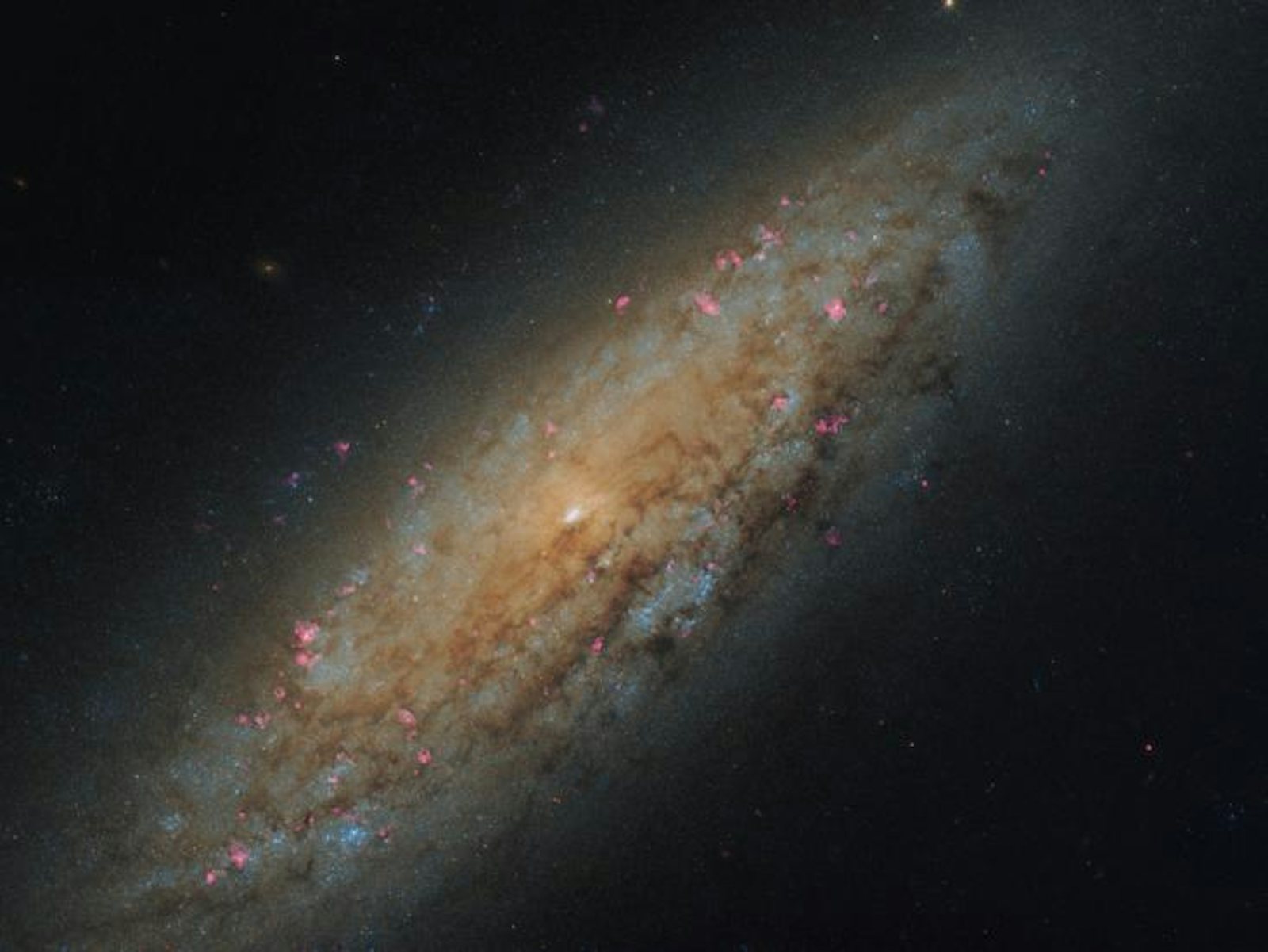Given how absurdly vast the cosmos is, with its hundreds of billions of galaxies, picturing it isn’t easy. You might think it natural, for instance, to see all these galaxies as more or less evenly spread out across the Universe. But you’d be wrong. Following the Big Bang, 13.8 billion years ago, says Robert Kirshner, an astrophysicist at Harvard, matter began to spread out pretty evenly but then started to clump. Matter-rich places eventually became denser and denser, and as they formed and grew, so too did empty spaces. Check it out.
Those voids, despite filling up over 60 percent of the Universe, are hard to find, says Kirshner. He’s been looking for them since 1981, when he and his colleagues found the Bootes void, one of the largest known voids to exist. “You have to make a lot of measurements to ensure that what you’re looking at is really a hollow shell,” he says.
Actually, they’re not completely hollow—matter in voids still manages to coalesce into dwarf galaxies on occasion. This fact presents astronomers with a unique opportunity to view uninterrupted galactic birth and development. “Galaxy formation and evolution is a messy process,” says Kathryn Kreckel, a researcher at the Max Planck Institute for Astronomy. “Voids provide a uniquely calm environment in which to disentangle the effects of some of the many processes that can play a role.” Galaxies in clusters tend to absorb dwarf galaxies, strip gasses from their environment and even collide with them, creating gigantic galaxy mashups—the Milky Way, in a galaxy cluster known as the Local Group, is an example. (It’s merged a number of times over the years with other galaxies and, in 500 million years, it will merge again, with the Andromeda galaxy.)
Void dwarfs pose “several interesting riddles and questions.”
Scientists using the Sloan Digital Sky Survey—which has “created the most detailed three-dimensional maps of the Universe ever made”—have managed to spot a good amount of dwarf galaxies in voids. Last year, for example, astronomers at Drexel University using the Survey examined “the first statistically-significant sample” of them—2,777 in total. They’re usually found to be in a more youthful state of star formation than dwarf galaxies outside of voids, and tend to be bluer. They also produce stars much more quickly than galaxies in clusters.
These void dwarfs pose “several interesting riddles and questions,” write Ignacio Ferraras, a cosmic archaeologist at University College London, and Anna Pasquali, an astrophysicist at Heidelberg University. For one, according to the standard theory of how the Universe evolved—the Lambda cold dark matter model—voids should be “teeming with dwarfs and low surface brightness galaxies,” but they’re not. In 2001, Princeton theoretical cosmologist Jim Peebles termed this anomaly “void phenomenon.” This “‘void phenomenon,’” says Kreckel, “suggests that low mass void galaxy formation is somehow suppressed.”
There are a few guesses as to why voids host less dwarf galaxies than expected. It could be that incoming UV radiation is heating up the cool gasses galaxies need to form, causing them to evaporate; or winds from supernova explosions could be blowing the gasses away, preventing them from condensing. It’s also possible, says Rien van de Weygaert, an astronomer at the University of Groningen, that objects do exist in these voids, but they are too faint to be effectively detected by our instruments. Peebles suggests that the ionizing radiation of the galaxies that first form in voids may prevent others from taking shape nearby. More speculatively, it could be hypothetical particles like warm dark matter that are producing “regions that are quite devoid of gravitational seeds for structure formation,” says van de Weygaert.
If that’s true, he says, “the dearth of void dwarfs has the possible implication that the standard theory of cosmological structure formation could have a serious flaw.” It’s a worry that’s been nagging theorists for years. Peebles pointed this out over a decade ago in “The Void Phenomenon” : “The apparent inconsistency between theory and observations of void,” he wrote, “is striking enough to be classified as a crisis.”
Ian Chant is a freelance journalist who writes about science, culture, and publishing. His work has appeared in Popular Science, Popular Mechanics, Scientific American Mind, and other places as well.






























